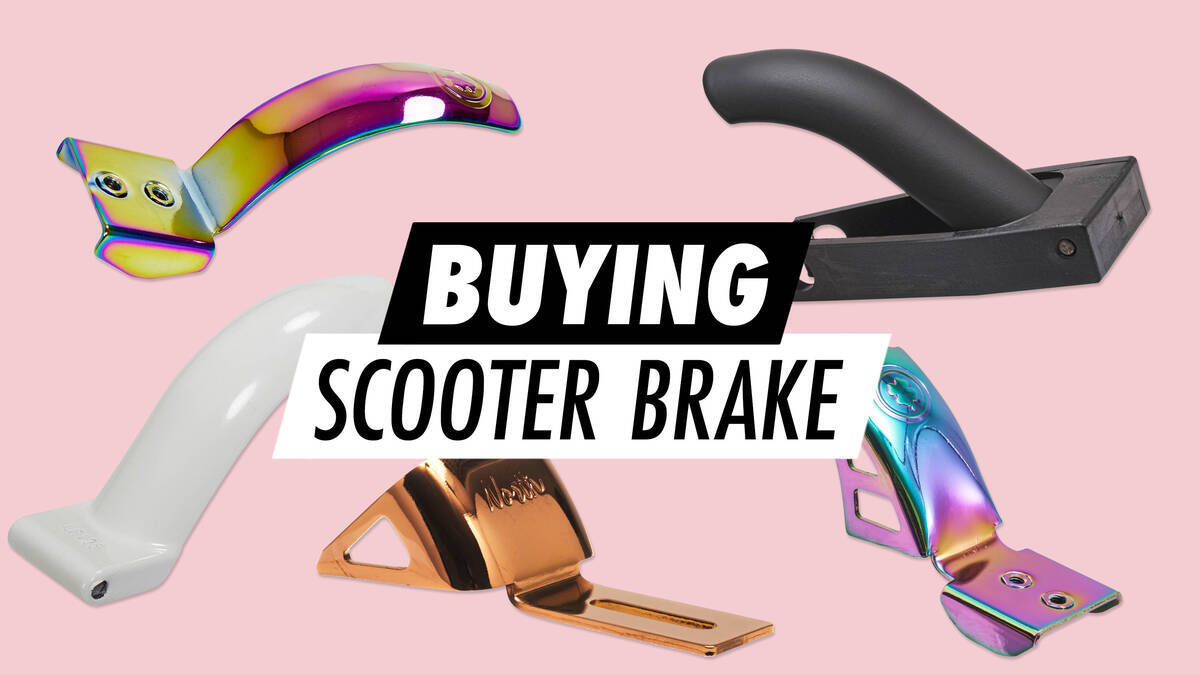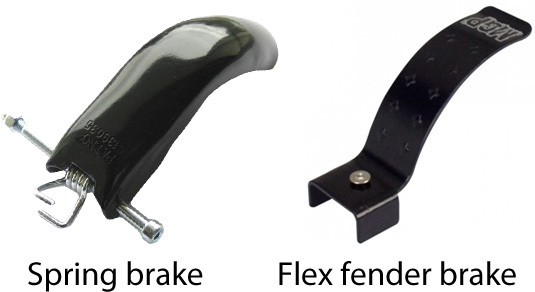Purchasing a Scooter Brake

Brakes are intended to decelerate or prevent collisions.
To maximise braking efficiency, gently apply pressure on the brake while shifting your weight backwards on the scooter.
Avoid obstructing your wheel/brake on the scooter, as this will diminish braking efficiency and lead to flatspots on your wheel, regardless of the wheel's make or quality.
Below is a depiction of the two most frequently used brakes.

- A spring brake is installed on the connected bolt, which is further secured to the deck. The spring ensures the brake remains in an upward position, away from the deck.
- A flex fender brake constitutes a lengthy metal plate, pre-bent to contour around the wheel. It is typically affixed to the deck with screws. Pressing the metal plate causes the entire plate to flex towards the wheel.
Both brake types are suitable for wheels of 100 mm and 110 mm, as usually indicated in the product description.
Tips:
- Avoid obstructing your brake (To prevent flatspots, which cause the wheel to bounce).
- Spring brakes have more components and are usually noisier compared to flex fender brakes.
- Due to their design, flex fender brakes often possess a reduced lifespan.
- Maintaining a completely silent brake over extended periods is not feasible.
- 110 mm wheels are incompatible with 100 mm brakes.
- 100 mm wheels are compatible with and can work under a 110 mm brake.
- Not all brakes are compatible with all decks. (Stick to the same brand and type).
- Flex fender brakes can easily break if a wheel is excessively worn, as the plate must travel a greater distance to engage it. Always replace your wheels before they become entirely worn out!
Here, you can watch a demonstration of mounting a flex fender brake on your deck:
Return to Assembling a Custom Trick scooter
Return to Detailed Insights on Stunt Scooters
